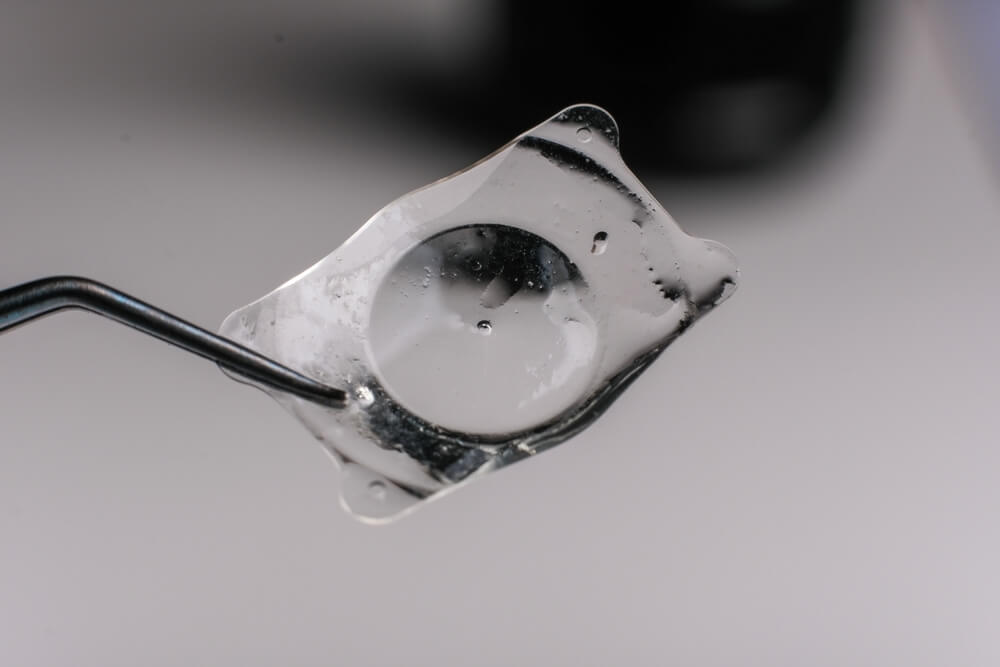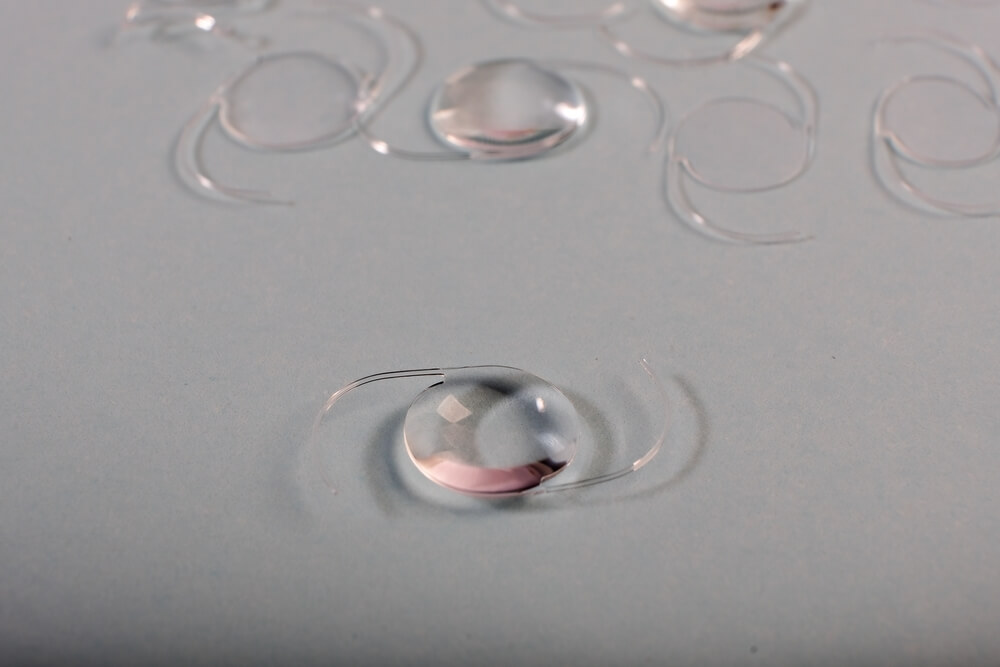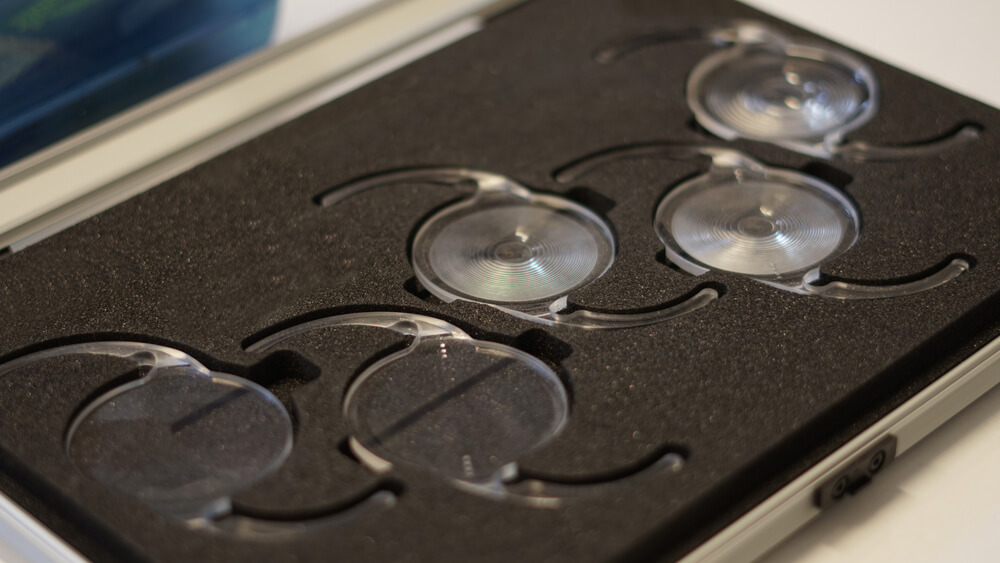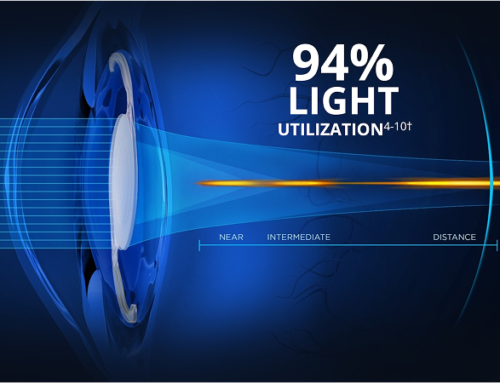Your vision is priceless, yet millions worldwide are affected by cataracts, a leading cause of vision impairment. The innovation of intraocular lenses (IOLs) has revolutionized cataract surgery. They allow patients to regain clear vision and can even reduce or eliminate their dependence on glasses or contacts.
However, navigating the variety of types of IOL lenses available today can often be as complex as the mechanism of the human eye itself. This blog will guide the labyrinth of IOL types, illuminating the paths to optimal postoperative vision.
An Overview of Intraocular Lenses (IOLs)

Cataracts, the clouding of the eye’s natural lens, can significantly impact daily activities and, ultimately, one’s quality of life. Fortunately, removing these opaque lenses during cataract surgery provides an ideal opportunity for vision correction by the implantation of IOLs. These tiny yet powerful implants are designed to restore clear vision by replacing the eye’s natural lens.
Why Are IOLs Essential?
The need for IOLs arises from the essence of cataract surgery: restoring vision in a way that aligns with the patient’s unique visual demands. Whether reading fine print or admiring a panoramic view, the appropriate IOL can help you improve your eyesight like never before. This journey begins with a critical choice: selecting the IOL type that best suits the patient’s lifestyle and visual objectives.
What Are The Different Types of IOL Lenses?
If you are wondering how many types of IOL are available, here is an in-depth look at each of them for you to choose the one that best fits your needs with the help of your eye doctor:
Monofocal IOLs
Monofocal IOLs are designed to provide clear vision at one distance, typically either near or far. Considered the standard IOL option, they are most often used to correct distance vision, with patients relying on reading glasses for close-up activities post-surgery.
How They Work
Monofocal lenses, as the name suggests, offer a fixed focal point. They are similar to a trusty, single-lens camera, refining the clarity of a specific distance. For example, it could be a favorite painting at home, highway signs, or subtle facial expressions. When precision in one area is paramount, monofocal IOLs are the go-to choice.
Advantages and Considerations
One significant advantage of monofocal IOLs is their proven track record and reliability. They’re also an excellent option for patients with more advanced vision loss who may not qualify for more complex lens types. However, they will need glasses for tasks beyond their set focal point, which can be a limiting factor for those with active, varied lifestyles.
Multifocal IOLs

Multifocal IOLs promise a broader range of vision by employing a series of focal zones across the lens surface. They aim to diminish (or eliminate) the need for glasses by offering clear vision at multiple distances.
How They Work
The complexity and finesse of multifocal IOLs are analogous to having two, three, or even more targeted lenses within the eye. This technology can provide a seamless transition from near to far, accommodating activities like reading and driving without glasses or contacts.
Weighing the Benefits and Drawbacks
The significant advantage of multifocal IOLs is their potential to reduce dependence on glasses. However, this widespread focus can sometimes lead to less intense clarity at a single distance. Furthermore, because not every individual’s neuroadaptation to multifocality is seamless, a minority of patients may report halos or glare, especially at night.
Trifocal IOLs
Trifocal IOLs represent an evolution of the multifocal concept, introducing an additional zone designed to improve intermediate vision. This innovation aims to enhance the patient’s ability to see objects at arm’s length. This range is often used for tasks like computer work or viewing dashboard displays.
How They Work
By incorporating a third focal point, trifocal IOLs expand the adaptable range of vision to include a critical in-between distance. This trifocal combination can be particularly beneficial in modern, tech-dominated lifestyles, where intermediate distances are frequently the focal point.
Advantages and Disadvantages
Trifocal IOLs can offer a broad range of vision without significant compromises. Yet, some patients might need more time for the brain to adjust to the trifocal functionality. Additionally, individual variations in visual response and satisfaction levels mean that not all patients will experience the same success with trifocals.
Toric IOLs

For patients with astigmatism, vision at any distance may be blurry due to a cornea or lens irregularity. Toric IOLs are specially engineered to address this condition, potentially reducing or eliminating the astigmatic error without additional surgery.
Understanding Astigmatism Correction
Astigmatism is like the eye’s roadmap developing curves that should be straight, leading to distorted vision. Toric IOLs are like skilled cartographers, flattening and shaping the terrain of the eye’s lens to allow light to focus correctly.
The Straight and Narrow
The most significant upside to toric IOLs is their capacity to treat astigmatism, a common condition occurring alongside cataracts. Yet, a meticulous surgical approach is crucial because toric IOLs require precise alignment within the eye. Furthermore, their focus on correcting astigmatism implies that they don’t inherently offer multifocal capabilities. Patients may still need reading glasses or monofocal assistance, depending on their vision needs.
Accommodating IOLs
Accommodating IOLs aspire to mimic the eye’s natural lens flexibility, shifting focus between near and far by responding to the muscles’ natural contractions. This dynamic focus aims to provide a more natural and active adaptation to vision changes.
The Lens that Learns to Bend
Unlike their fixed-focus counterparts, accommodating IOLs are designed to move and respond to the eye’s behavior, similar to presbyopia compensation. This could offer a more fluid visual experience where the patient’s focus dictates the lens’s subtle movements.
Benefits and Disadvantages
The promise of accommodating IOLs lies in their ability to provide a more organic visual response. Yet, the measured flexibility of these lenses might not be sufficient to eliminate the need for glasses, particularly for extensive near work. Also, their effectiveness varies among individuals, and sometimes, the anticipated range of focus isn’t achieved, leading to eventual reliance on corrective lenses.
IOL – LALs
The concept of light-adjustable lenses (LAL) has revolutionized the field of ophthalmology. These lenses are specifically designed to improve vision by using a technology that allows lens power adjustment after it has been implanted in the eye.
How They Work
Light-adjustable lenses are made up of photosensitive silicone. This material is sensitive to ultraviolet light, allowing the lens to be shaped and molded after it has been implanted in the eye.
When a patient first receives a light-adjustable lens, it is set at an initial power determined by their eye doctor. The lens is then exposed to a specific pattern of ultraviolet light, which causes the lens to change shape and adjust its power. This process is known as photo-refractive keratectomy (PRK).
The patient will need to visit their eye doctor for multiple sessions of PRK until the desired vision correction is achieved. The number of sessions required may vary depending on the individual’s eyesight and other factors.
Advantages and Disadvantages
One of the main advantages of light-adjustable lenses is their ability to be adjusted after implantation. If a patient’s vision changes over time, their lens can be easily modified to accommodate this change. Another advantage is that the adjustments are made without invasive procedures or eye incisions.
Disadvantages include the need for multiple PRK sessions, which may be time-consuming and costly. Some patients may also experience temporary discomfort or blurry vision during adjustment.
Choosing the Right IOL: Factors to Consider
The wealth of IOL options can overwhelm patients. Here are the key factors to weigh in the selection process:

Calibration to Lifestyle
Each IOL type offers unique benefits that can align with various lifestyle profiles. Assessing your daily routines, hobbies, and work requirements is crucial in identifying which lens has the right focal capabilities for you.
The Art of Compromise
No IOL is perfect for every situation, which means understanding and accepting potential limitations is part of the decision-making process. For example, a patient who values precision for a particular task may be better served by a monofocal lens supplemented with reading glasses as needed.
Personalization in Practice
At the heart of the matter is the personalization of the treatment plan. The better your surgeon understands your visual goals, the higher the likelihood of postoperative satisfaction. Engaging in thorough conversations to express your expectations and learning about the surgeon’s experience and track record with different IOLs can significantly impact the outcome.
Materials Available
Intraocular lenses (IOLs) are made from different materials, each selected for unique characteristics and advantages. Polymethylmethacrylate (PMMA), silicone, and acrylic (hydrophobic and hydrophilic) are the most frequently used materials.
- PMMA: This material has been used for many years and is recognized for its clarity and stiffness but it necessitates a larger surgical incision.
- Silicone IOLs: These lenses are more flexible, enabling smaller incisions and faster recovery.
- Acrylic IOLs: Hydrophobic varieties are especially favored due to their biocompatibility and lower likelihood of causing posterior capsule opacification, a common complication after surgery.
Empowering Patients with IOL Knowledge
The journey through cataract surgery and IOL implantation is one of remarkable transformation and brings various benefits. Ultimately, beyond the technological marvels and the surgical finesse lies the individual’s world experience.
As a patient, the quest for ideal vision is highly personal, and it is your story that these lenses aim to frame perfectly. Also, if you are wondering if you can use two different types of IOL lens implants for each eye, absolutely. Just make sure to talk with your surgeon to find the best choice.
We at Eye Care Professionals provide high-quality solutions for cataract restoration. Our team is highly experienced in selecting and implanting the right lens for each patient’s needs and goals. We understand that your vision is essential to your daily life, and we are committed to providing you with the best solution possible.
Let us guide you on this journey toward a clearer, brighter future. So, if you are considering cataract surgery or want to learn more about your options, schedule a consultation with us today!











